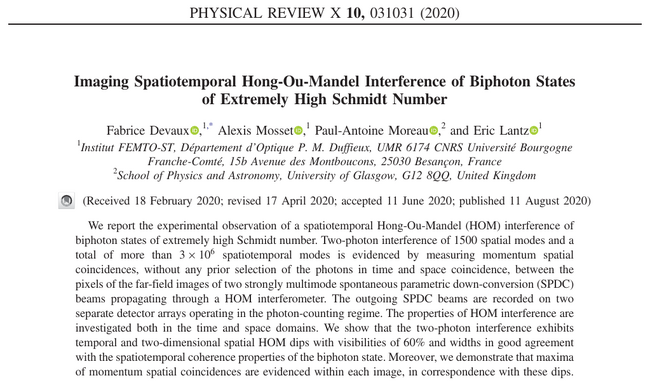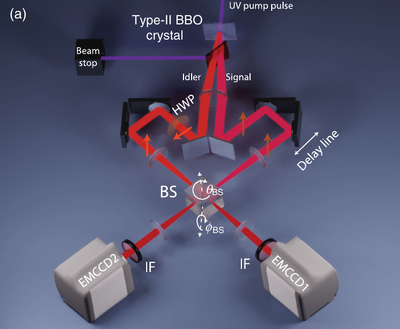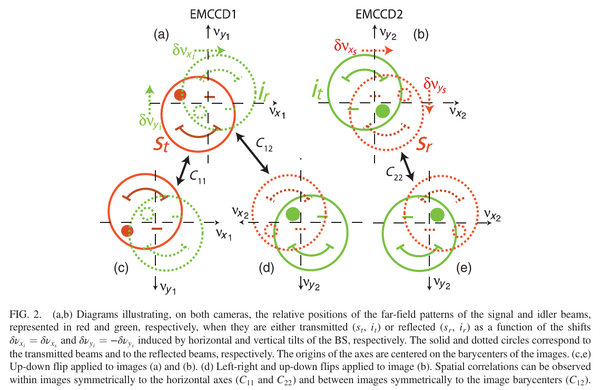
This page is among our 'okay articles'. It should be further expanded but we hope that it will still be useful in its present stage.Imaging Spatiotemporal Hong-Ou-Mandel Interference of Biphoton States of Extremely High Schmidt Number. F. Devaux, A. Mosset, P. Moreau and E. Lantz in Phys. Rev. X 10:031031 (2020). What the paper says!?

This reports the (first) experimental observation of HOM interferences in space (and time) of biphotons "of extremely high Schmidt number".
The "high Schmidt numbers" are related to Schmidt decomposition and are explained in the text as ««Strongly multimode twin SPDC beams (i.e., biphoton states of high Schmidt number)»». Schmidt numbers of this particular case are computed after their Eqs. (1) with the conclusion that they deal with very high dimensional states.
They do so by interfering in two different cameras the images that are interfered on a beam splitter first: (HOM configuration)

The camera they use can do spatial (and temporal) multiphoton imaging: (see also their Ref. [28] for the device itself):

They then study the interferences on two such cameras depending on their overlap in the BS:

They control the "quantum state" but in polarization (here they could put a fork dislocation to produce a vortex instead):
Before the BS, the polarization state of the idler beam is controlled with a half-wave plate (HWP)
Their emphasis on multimode entanglement, e.g., ««we have achieved simultaneous two-photon interference of 1500 spatial modes (i.e., over 1 order of magnitude more than in the work of Lee et al. [20])»», is a bit perplexing to me as in absence of interactions, any mode whatsoever can be regarded as a single mode:
genuine multimode HOM interference implies entanglement, as quoted by Lee et al. [20]
Details of their findings remain to be studied, but the outer configuration is this one.